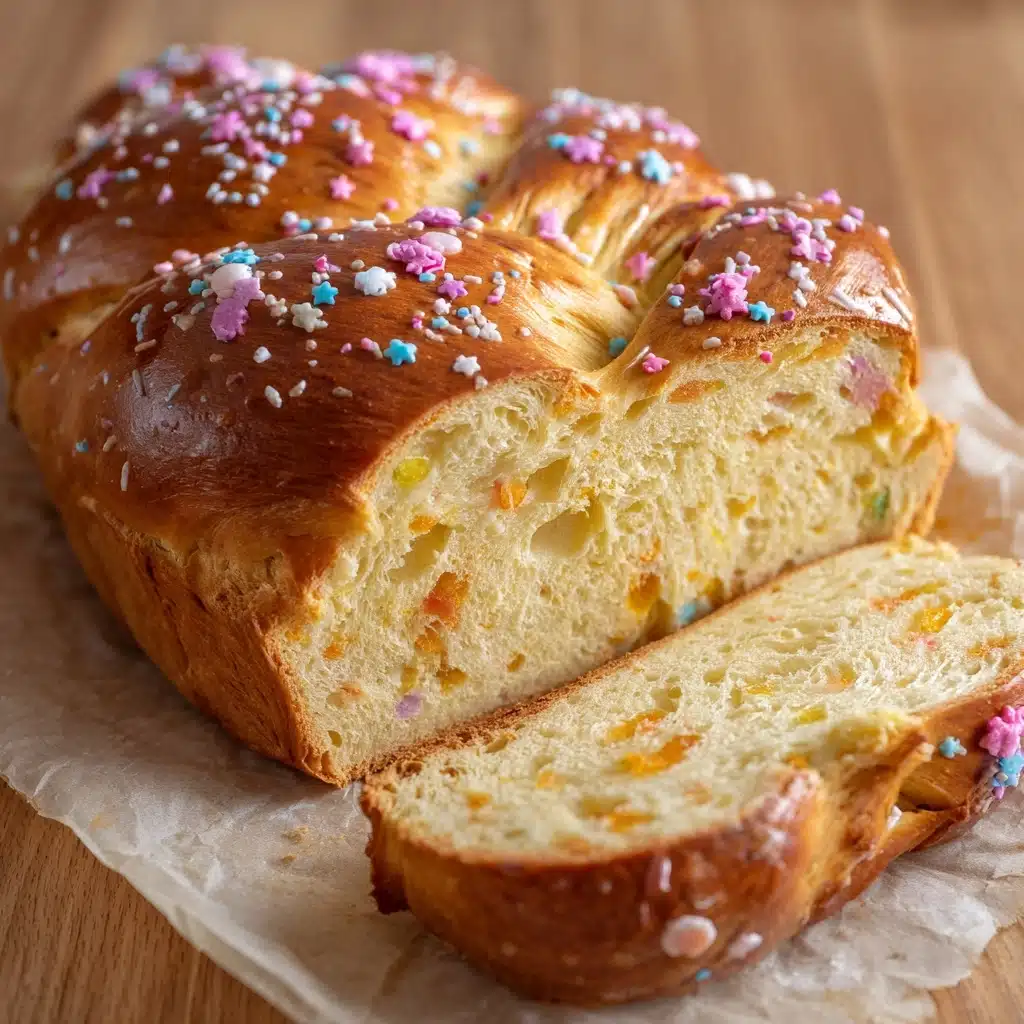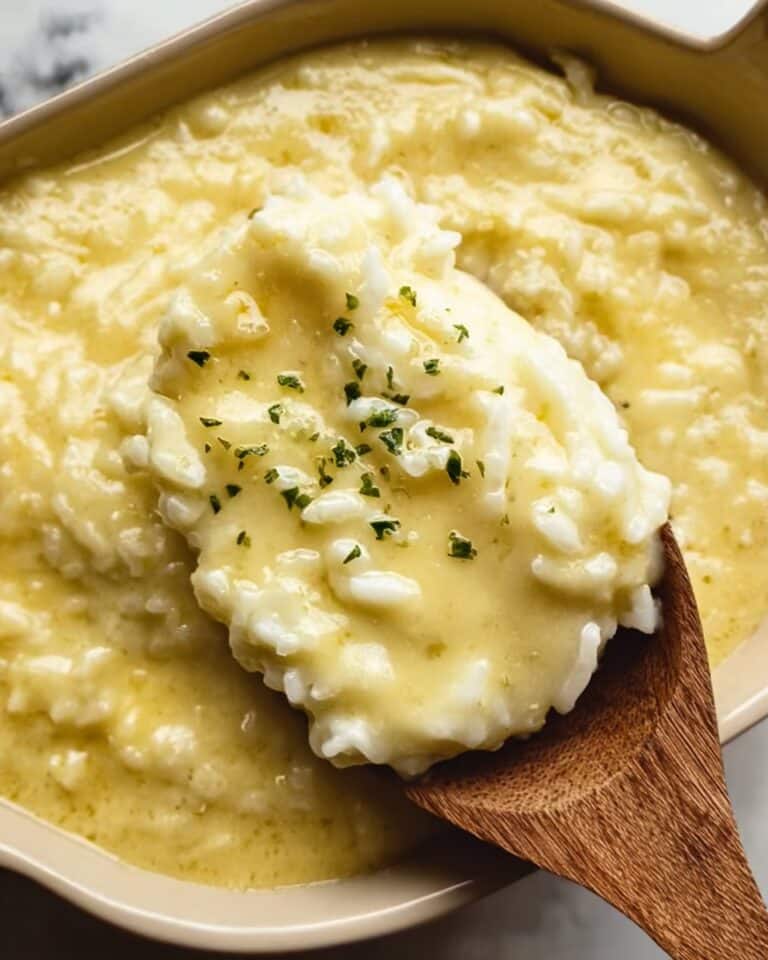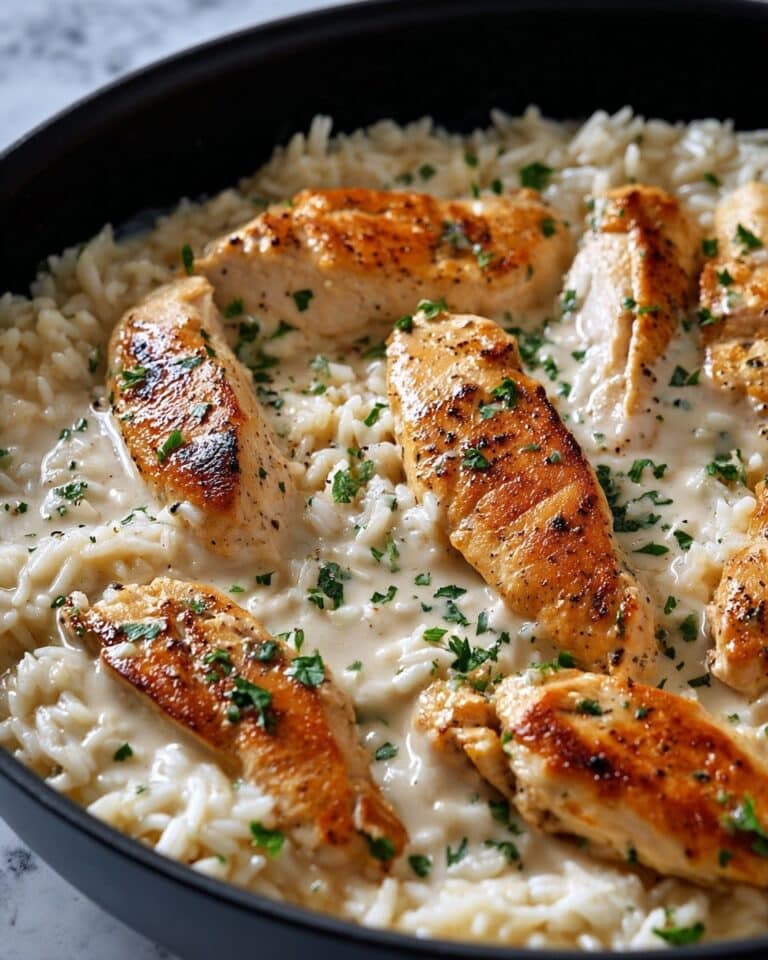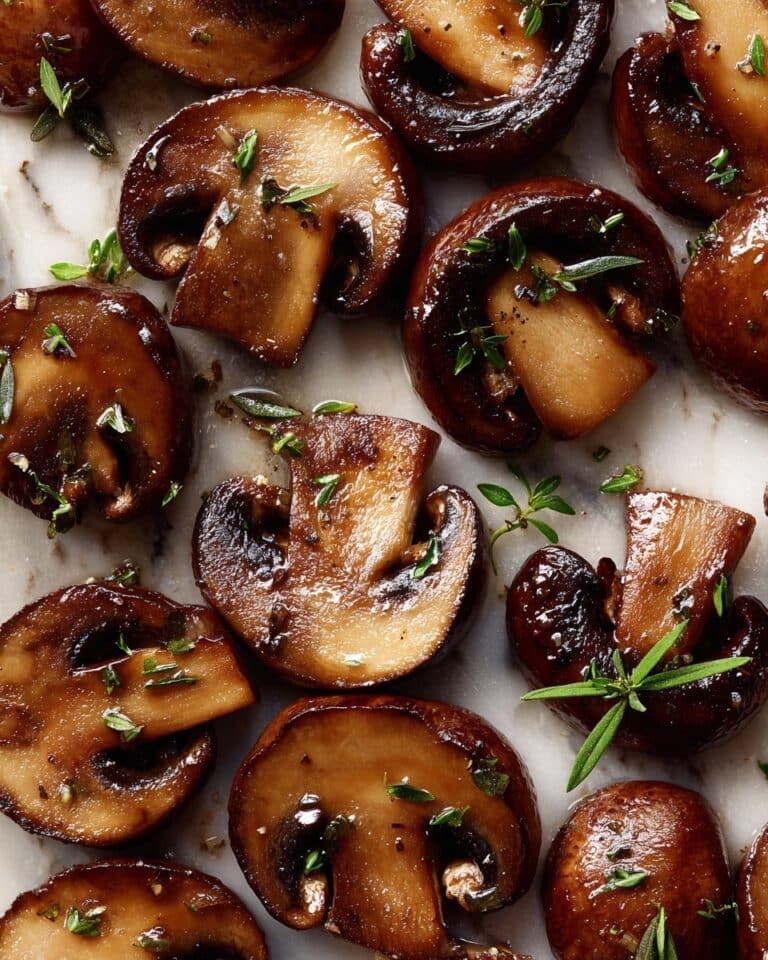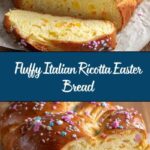There’s something pure magic about the aroma of Italian Ricotta Easter Bread wafting through your kitchen on a spring morning. This classic Italian bake isn’t just gorgeous—braided and showered with colorful sprinkles—it’s also incredibly tender, subtly sweet, and enriched with creamy ricotta cheese. Even if you don’t celebrate Easter, this bread is pure comfort and joy in every slice, a beautiful centerpiece for any family brunch or festive table.
Ingredients You’ll Need
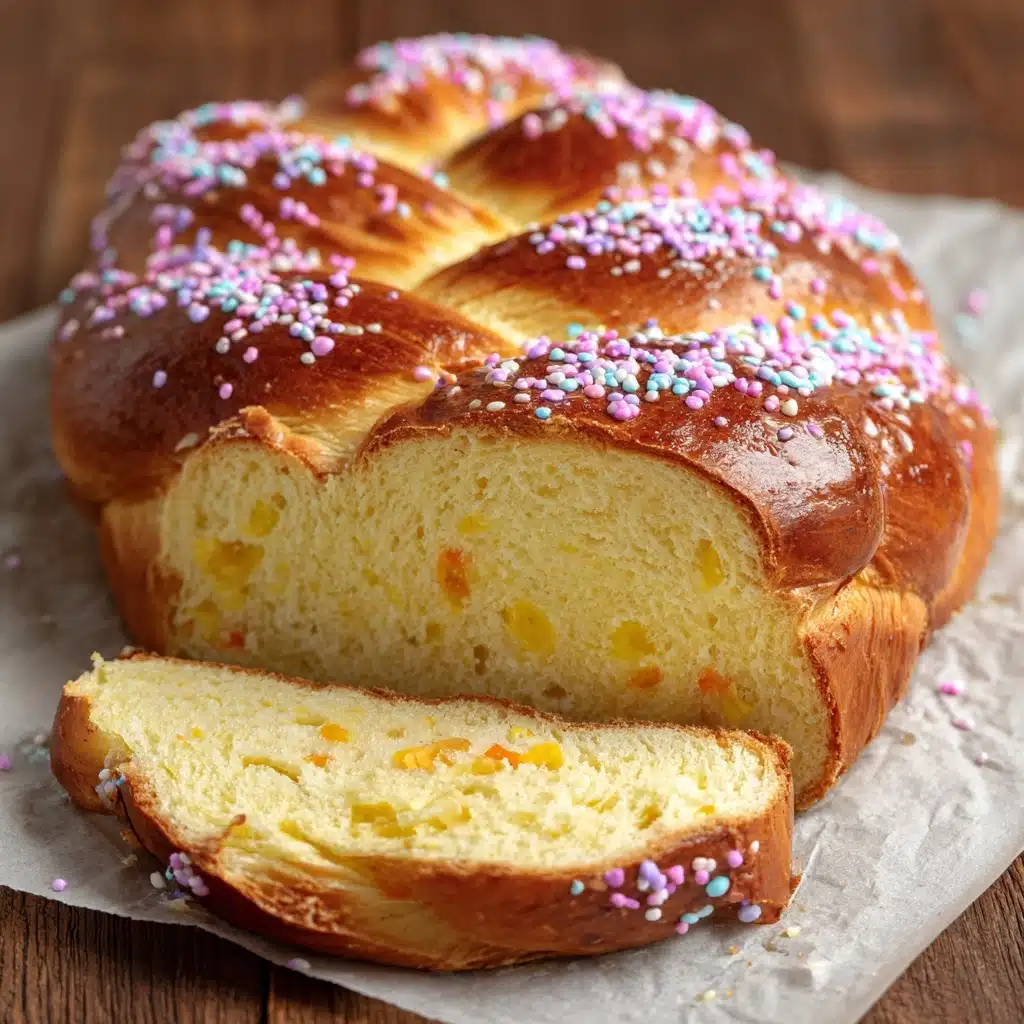
Ingredients You’ll Need
You’ll be surprised at how simple the ingredient list is for this show-stopping bread. Each component has an important job: from giving the bread its cloud-soft crumb to adding that delicate, gently sweet flavor. Let’s take a closer look at how every ingredient shines in Italian Ricotta Easter Bread.
- All-purpose flour: The base of your bread, giving it just the right structure while keeping the crumb soft and tender.
- Active dry yeast: The secret to fluffy, lifted bread; be sure it’s fresh so your dough rises beautifully.
- Whole milk (warmed): Warm milk helps activate the yeast and lends a richness that sets this bread apart.
- Granulated sugar: Adds gentle sweetness—this is a festive, celebratory bread after all!
- Unsalted butter (softened): Butter creates richness and beautiful flavor throughout the loaf.
- Large eggs: Essential for structure, color, and that signature pillowy softness.
- Vanilla extract: For a lovely, sweet aroma and a bakery-style taste.
- Almond extract: A little goes a long way, adding deep, nutty fragrance to the bread.
- Salt: Keeps all the flavors in balance and ensures the sweetness isn’t overwhelming.
- Ricotta cheese (drained if watery): The star ingredient—ricotta brings moistness and a delicate, cakey crumb.
- Colored sprinkles: For that joyful, festive finish! Use your favorites to match the season.
- Egg (beaten, for egg wash): Gives the crust its golden sheen and helps the sprinkles stick.
How to Make Italian Ricotta Easter Bread
Step 1: Start With the Yeast
Begin by dissolving your active dry yeast in warm milk. Let it sit for about five to ten minutes until it turns foamy on top—this tells you the yeast is alive and ready to help your bread rise nice and high. If you don’t see bubbles, check that your milk wasn’t too hot (or too cold), and always use fresh yeast!
Step 2: Cream Butter and Sugar
In a large mixing bowl, beat your butter and sugar together until the mixture turns light and fluffy. This step is crucial, giving your Italian Ricotta Easter Bread that melt-in-your-mouth, tender crumb. Don’t rush it—good creaming means better bread!
Step 3: Add Eggs and Flavors
Crack in your eggs, one at a time, mixing thoroughly after each addition. Next, stir in the drained ricotta cheese, vanilla extract, and almond extract. This is where the bread’s unique aroma and creamy, moist texture really start to develop.
Step 4: Combine With the Yeast Mixture
Pour your foamy yeast and milk mixture into the bowl, blending gently to combine all those wet, rich ingredients. This union is what gives Italian Ricotta Easter Bread its signature lightness and depth!
Step 5: Mix and Knead the Dough
Gradually add your flour and salt, stirring until a soft dough begins to form. Turn out the dough onto a lightly floured surface and knead for 8 to 10 minutes, until it’s smooth, elastic, and just a little tacky. Take your time here—kneading develops the gluten for a lovely, chewy bite.
Step 6: Let It Rise
Place your dough into a greased bowl, cover with a towel, and set it somewhere warm and draft-free. Let it rise for 1 1/2 to 2 hours, or until doubled in size. Watching your dough puff up is always such a rewarding sight!
Step 7: Shape the Bread
Punch down the dough to deflate it, then divide it into three equal portions. Roll each chunk into a long rope and braid them together. Gently form your braid into a circle, pinching the ends to seal. Carefully lift it onto a parchment-lined baking sheet.
Step 8: Final Rise
Cover your beautiful braided ring and let it rise again—this time for 30 to 45 minutes. It’s your bread’s last chance to get fluffy before the oven!
Step 9: Decorate and Bake
Brush the top with beaten egg to give a golden color, then scatter colorful sprinkles over the top (or tuck in some dyed eggs for a classic Italian look). Pop it into a preheated 350°F oven and bake for 30–35 minutes, or until the crust is golden and the bread sounds hollow when tapped. Cool completely before slicing for the neatest slices.
How to Serve Italian Ricotta Easter Bread
Garnishes
A generous scattering of colored sprinkles is the classic touch on Italian Ricotta Easter Bread, celebrating the festive spirit! If you want to go extra traditional, nestle in a few dyed (raw) eggs before baking—these cook gently as the bread bakes and add a fabulous pop of Easter color to your table.
Side Dishes
Serve thick slices alongside your favorite spring brunch dishes. Fresh fruit, creamy mascarpone, or even soft, spreadable cheeses make wonderful partners. A bit of honey, fruit preserves, or a swipe of high-quality butter only make each bite of Italian Ricotta Easter Bread more irresistible.
Creative Ways to Present
For a stunning brunch display, arrange the bread in the center of your table with a small bunch of flowers or decorative Easter eggs in the middle. Alternatively, give smaller, individual braided rings as gifts for friends and family—wrap in clear cellophane with a colorful ribbon for a thoughtful touch.
Make Ahead and Storage
Storing Leftovers
If you (miraculously) have leftovers, store the Italian Ricotta Easter Bread tightly wrapped in plastic or aluminum foil at room temperature for up to three days. It stays moist and delicious thanks to the ricotta, but do keep it away from air to avoid drying out.
Freezing
This bread freezes beautifully. Simply wrap the cooled loaf tightly in a couple of layers of plastic wrap and then a layer of foil. Label and freeze for up to two months. When you’re ready for a taste of spring, thaw overnight at room temperature.
Reheating
To bring back that fresh-baked warmth, place individual slices or the whole loaf in a low oven (about 300°F) for 5 to 10 minutes. You can also toast slices for a crisp edge, perfect with a pat of butter or swipe of jam.
FAQs
Can I make Italian Ricotta Easter Bread ahead of time?
Absolutely! In fact, the bread keeps its texture and flavor quite well for a couple of days. Bake it the night before your brunch, cool completely, and wrap it well to preserve its softness. If you prefer truly fresh bread, you can make the dough the night before and let it rise in the fridge, then shape and bake in the morning.
What if my bread doesn’t rise enough?
If your dough isn’t rising as expected, the culprit is usually old or inactive yeast, or a room that’s too cool. Make sure your yeast foams up in the warm milk before adding it to the dough, and find a cozy spot for your bread to rest during its rise—a turned-off oven with the light on works wonders.
Can I substitute part-skim ricotta for whole milk ricotta?
You can, though the bread will be slightly less rich and moist. Whichever you use, be sure to drain the ricotta well if it seems watery to prevent the bread from getting dense or gummy.
Do I have to use the sprinkles?
Feel free to skip the sprinkles or swap them for pearl sugar or a simple dusting of powdered sugar after baking if you prefer. The sprinkles are a nod to tradition and add holiday cheer, but they’re not essential to the bread’s flavor.
How do I know when the bread is fully baked?
Your Italian Ricotta Easter Bread should be deeply golden and sound hollow when tapped on the bottom. For complete certainty, check the internal temperature with an instant-read thermometer—it should read about 190°F at the center.
Final Thoughts
Few things bring people together like the unforgettable aroma and taste of homemade Italian Ricotta Easter Bread. Whether you’re baking it for a special holiday or simply infusing your weekend with a bit of old-world magic, give this beloved recipe a try—you might just find a new tradition to cherish every year.
Print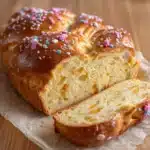
Italian Ricotta Easter Bread Recipe
- Total Time: 3 hours 15 minutes
- Yield: 1 braided loaf 1x
- Diet: Vegetarian
Description
A delightful and traditional Italian Easter bread recipe, this sweet and tender bread is made with ricotta cheese, flavored with extracts, and braided into a beautiful loaf, perfect for the holiday season.
Ingredients
Dough:
- 4 cups all-purpose flour
- 1 packet (2 1/4 teaspoons) active dry yeast
- 1/2 cup whole milk (warmed to 110°F)
- 1/2 cup granulated sugar
- 1/2 cup unsalted butter (softened)
- 3 large eggs
- 1 teaspoon vanilla extract
- 1/2 teaspoon almond extract
- 1/2 teaspoon salt
- 1 cup ricotta cheese (drained if watery)
For Garnish:
- Colored sprinkles
- 1 egg, beaten (for egg wash)
Instructions
- Prepare the Yeast: Dissolve the yeast in warm milk and let sit until foamy.
- Mix the Dough: Beat butter and sugar, add eggs, ricotta, extracts, and yeast mixture. Mix in flour and salt until a soft dough forms.
- Knead and Rise: Knead dough, let rise until doubled.
- Braid and Shape: Divide dough, braid, form a circle, and let rise again.
- Bake: Brush with egg wash, decorate with sprinkles, and bake until golden.
- Cool and Serve: Cool on a wire rack before slicing.
Notes
- This bread is a classic part of Italian Easter festivities.
- You can add dyed raw eggs into the braid for a festive touch.
- Best enjoyed fresh or as delicious French toast.
- Prep Time: 30 minutes
- Cook Time: 35 minutes
- Category: Bread
- Method: Baking
- Cuisine: Italian
Nutrition
- Serving Size: 1 slice
- Calories: 260
- Sugar: 8g
- Sodium: 150mg
- Fat: 10g
- Saturated Fat: 6g
- Unsaturated Fat: 4g
- Trans Fat: 0g
- Carbohydrates: 35g
- Fiber: 1g
- Protein: 7g
- Cholesterol: 60mg
